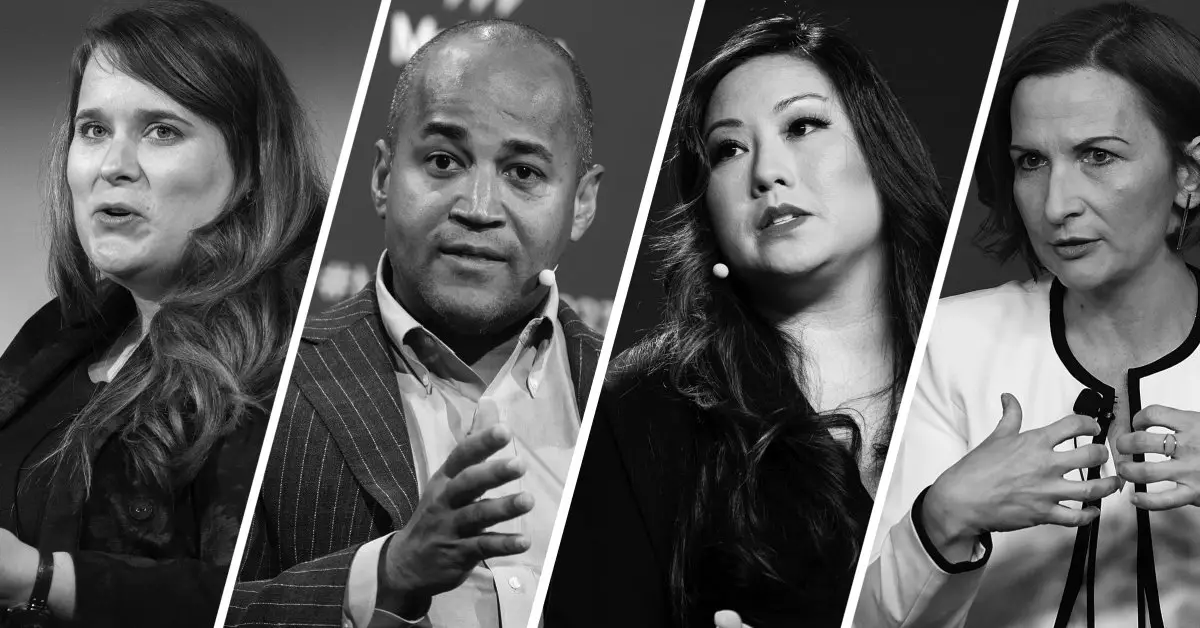After years of false starts and regulatory crackdowns, crypto’s future in America may be reignited by something deceptively simple: a digital dollar that doesn’t fluctuate in value.
Stablecoins—cryptocurrencies pegged to the U.S. dollar—have quietly become the centerpiece of Washington’s new approach to digital assets. With President Donald Trump now publicly embracing crypto and bipartisan momentum building in Congress, lawmakers have a rare chance to pass the country’s first major crypto legislation. But industry leaders warn: move too slowly, or get too ambitious, and even that narrow victory could slip away.
That was the consensus at a TIME100 Talks conversation titled “The Future of Finance: Can Regulation Power Innovation?” on Saturday, April 26, where some of crypto’s most influential players gathered ahead of the White House Correspondents’ Dinner to dig into the current debate over digital asset regulation that could well shape the next chapter of finance and economic progress for decades to come.
The panel was moderated by TIME technology correspondent Andrew R. Chow and featured Dante Disparte, the chief strategy officer at Circle—the sponsor of the event—acting Commodity Futures Trading Commission (CFTC) chair Caroline Pham, former Federal Deposit Insurance Corporation (FDIC) chair Jelena McWilliams, and former White House National Security Council special adviser Carole House. The panelists agreed that a focused, narrow bill regulating stablecoins could help cement the U.S. dollar’s dominance in a digital future. They argued that Congress should pass stablecoin legislation now, before broader fights over crypto market structure derail the opportunity.
“Having worked in the Senate on many legislative efforts, it’s hard to get a bill passed,” McWilliams said with a chuckle. “You get done what you can get done, and you call it a victory.”
But despite the broad consensus on the issue, the road to regulation is tricky. Recent reports detail how some crypto companies and lobbyists have pushed to pair stablecoin legislation with a broader, more complex market structure bill—an approach the panelists appeared to oppose. “It would be an utter mistake to try to create a joint and severable model where stablecoins and market structure go side by side,” Disparte said. “It would deny the President a bipartisan legislative win… The stablecoin bill is ready to go and the President wants it on his desk to sign. They can do it before the summer recess, and there’s energy—and I think a deep national security imperative to get it right.”
Indeed, there appears to be a growing energy around crypto in Washington. Trump, who once called Bitcoin a “scam,” has embraced the industry—and the industry has embraced him right back. During the 2024 election cycle, crypto companies and executives poured tens of millions into campaign donations, helping usher in a Congress far more friendly to digital assets. In March, Trump said that he hoped to sign stablecoin legislation by August. Since then, both the House and Senate have advanced bills—the STABLE Act and the GENIUS Act—out of committee, setting the stage for what could be the first major piece of crypto legislation in U.S. history.
Read More: How the Crypto World Learned to Love Donald Trump, J.D. Vance, and Project 2025
At its core, a stablecoin is a digital token pegged to a fiat currency like the U.S. dollar, designed to offer the speed and accessibility of crypto without the volatility of assets like Bitcoin or Ethereum. Today, stablecoins represent a $238 billion market—up from $152 billion just a year ago—and are increasingly used for everything from cross-border payments to decentralized finance. Supporters argue that they could bolster the dollar’s global standing, provide lifelines to inflation-stricken economies, and modernize the U.S. financial system.
“To me, the key question here is not really the vehicle, but we have to focus on the outcome and the prize,” Pham said. “The prize here is that good regulations are good. Anybody who thinks that you’re going to [have a] money or banking system with no regulations is ridiculous.”
Stablecoin regulation, the panelists argued, isn’t just about innovation. It’s also about financial stability, national security, and global competitiveness. “We need to be able to provide for instant payment at the speed of the Internet and at the speed of human need,” Disparte said. “Domestically, it’s a misery to move money fast.”
House agreed that the moment to act had finally arrived, noting that stablecoin legislation has been debated for three consecutive Congresses, stalling each time over partisan divisions and industry infighting. “This has been the low-hanging fruit,” she said. “I’m delighted that we’re finally going to get it, but I agree that it would be a mistake [to pass both bills together].”
Still, not everything about the pending bills inspires confidence. Some panelists raised alarms about a provision in the Senate’s GENIUS Act that would allow foreign stablecoin issuers to apply for U.S. licenses directly through the Treasury Department—without the same oversight faced by domestic firms. That, they warned, could open the door to major players like Tether, an international cryptocurrency whose opaque reserve practices and regulatory controversies have long worried U.S. officials.
Asked by Chow, the author of Cryptomania, whether a foreign issuer should be able to put out a stablecoin in the U.S. without direct supervision of the U.S. authorities, Disparte warned that letting foreign issuers operate under looser rules could weaken trust in U.S. dollar-backed assets.
“I cannot build a car without an airbag and then drop it on the streets of the United States without complying to our safety standards,” he said. “What’s the incentive to stay in the U.S. if a bill is passed that allows an offshore issuer to have free access to the US banking system? … Wouldn’t it be nice if the rest of this largely amorphous industry also planted flags in the United States? You should not be able to counterfeit the U.S. dollar anywhere in the world and not obligate yourself to U.S. law and U.S. competitiveness.”
House also stressed the dangers of creating an uneven playing field for U.S.-based firms, warning that if Congress creates a system where offshore stablecoin issuers have easier access than U.S. firms, that is “not, in fact, setting the stage for true competitiveness for U.S. markets.”
Still, political complications loom. Trump’s own growing entanglement with the crypto industry—including the launch of a Trump-branded stablecoin through World Liberty Financial, the crypto venture backed by his family—has already sparked ethical concerns. Critics worry that Trump’s direct financial stake in a market he’s trying to regulate could complicate legislative efforts—or worse, politicize them.
Pham, who was nominated by former President Joe Biden as CFTC commissioner and then designated acting chair by Trump, noted the current Administration has made crypto a much larger focus. “The previous Administration had been quite skeptical of the crypto industry, if not downright hostile,” she said. In contrast, she praised the Trump Administration’s openness, citing the first-ever White House Crypto Summit last month—just a day Trump signed an Executive Order establishing a “Strategic Bitcoin Reserve.”
“It was the first time to be there in the room with these new market participants in an open and welcoming way without stigma,” Pham said. She emphasized the need for “a principles-based regulatory framework that allows for fair competition and responsible innovation,” adding that the CFTC had already rescinded crypto-related advisories from 2018 to reflect how much the market has evolved.
McWilliams, the former FDIC chair, echoed that sentiment: “The crypto revolution, or cryptopalooza, is happening,” she said, adding that “if you’re not at the table, you’re on the table.”
TIME100 Talks – The Future of Finance: Can Regulation Power Innovation? was presented by Circle.



